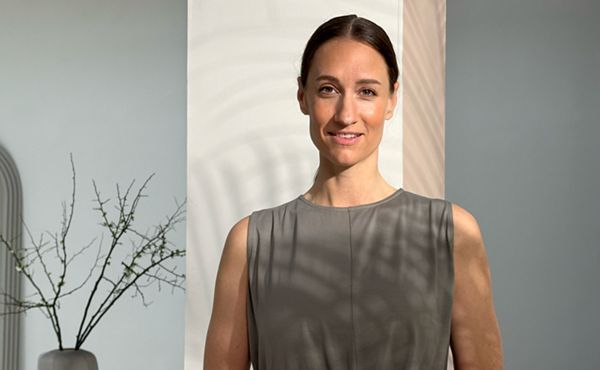It has only happened to me a few times. Suddenly, in the middle of a dream, I become aware that I am dreaming. Then, the whole experience of the dream changes. I no longer purely identify with the “main character” or the “me” in the dream. I somehow realise I am the one dreaming—some scholars of dream psychology call this “the deeper, dreaming Self.”
This phenomenon is known as lucid dreaming. Lucid dreaming is nothing more than becoming aware (during a dream) that you are dreaming. Some more experienced lucid dreamers can then use this conscious awareness to change or direct the dream situations, characters or environment.
However, the point of lucid dreaming is not necessarily to “control” the dream. While this may be fun and adventurous, lucid dreaming can offer us much more insight into the inner workings of the human brain and (perhaps more importantly) the mysterious nature of our conscious and unconscious mind.
The science behind lucid dreaming
According to an article by Dr. Steven Novella, an academic neurologist at Yale University School of Medicine, many studies have suggested that lucid dreaming is a hybrid state between fully awake and REM sleep. “The frontal lobes are more active in lucid states than normal REM, but not as active as fully awake.”
Many additional studies point to the frontal lobes of the brain being active in lucid dreaming. According to Dr. Novella this makes sense because “that is the part of the brain that is most involved in reality testing, self-reflection and metacognition (thinking about thinking). In other words, we possess brain structures, specifically the frontopolar cortex, that allow our brains to monitor, and to some degree control, their own activity. We experience this as thinking about our own thoughts; being self-reflective.”
A matter of mindfulness
Ok, enough science. Let’s take this down to the level of our own experience. If you think about a banana, you can also think to yourself, “I am thinking about a banana.” Developing this self-reflective capacity or introspection during the day can help you have lucid dreams at night. The key, according to many lucid dreamers, is awareness. Again, according to Dr. Novella, one of the “highest” brain functions that we possess is “the ability to monitor and reflect upon our own thoughts.”
This ability to monitor and reflect upon our own thoughts sounds a whole lot like mindfulness.
Developing a regular practice of mindfulness and meditation creates a relationship where we dis-identify with the conscious ego and begin to change our relationship to the thoughts that arise. We start to realise that we are not the thoughts themselves, but we are the one doing the thinking. Do you see how this correlates to dis-identifying with the dream ego in lucid dreaming and realising we are the one doing the dreaming?
Practical tips for lucid dreaming
So regular self-reflection and mindfulness is one way to increase your chances of lucid dreaming. Some other useful techniques are as follows:
1. Keep a regular dream journal
Before we can lucid dream, we need to remember our dreams in the first place. And almost every dream therapist will tell you that one of the best ways to begin remembering your dreams is to keep a dream journal.
From a Jungian perspective, this is one way we begin to cultivate a relationship to the unconscious, which is essential in dreamwork. Keep a journal by your bed, and the second you wake up from the dream, write it down. Don’t wait. Usually after a few minutes, the memory of the dream will fade.
After a while of dream journaling, you may start to notice “cues” that you are dreaming and thus be able to become more aware of it during the dream itself.
2. Do reality checks during your waking day
Every few hours during the day, ask yourself, “Am I dreaming?” and do something to check. For example, attempt to push your thumb through the opposite palm. During your dream, your finger would pass straight through and this may help you to realise you are dreaming.
3. Use an affirmation or mantra before you sleep
Before you fall asleep, repeat to yourself, “I will be aware that I’m dreaming” every time as you drift off. This helps to induce a habitual awareness to assist you in lucid dreaming.
4. Enhance your awareness
While writing this piece, I came across an article in Psychology Today about lucid dreaming. The writer interviewed a well-known lucid dream researcher, Beverly D’Urso. According to her,
“The best technique for becoming lucid is to actually become more aware and look and listen and pay attention to details, because when you see things that don’t fit, that’s a clue that you’re dreaming. To facilitate the process, you can form the habit of examining the environment or your state of awareness during the day. Mental habits you practice during the day tend to continue in dreams. So, you examine your environment during the day, you examine your awareness, and then you may notice that something is different once you start dreaming.”
Beverly has been a lucid dreamer since the age of seven so has a lot of firsthand experience. She, and many other lucid dreamers, believe that cultivating awareness is the key to unlocking our potential to experience lucid dreaming.
In a society and work culture that keeps us moving so fast, we often don’t even notice when someone enters the room. We often only partially pay attention during a conversation with our colleagues. We often lose track of our keys or walk straight past something we are looking for. Let’s just say we aren’t spending much of our day being fully aware.
What experts on lucid dreaming say
Lucid dreaming is a fascinating topic, and this article only skims the surface. While I have not read it (yet), there is supposed to be a fantastic book called Lucid Dreaming: Plain and Simple by Robert Waggoner and Caroline McCready. Waggoner has been a pioneer in the field of lucid dreaming experience and research since the 1970’s. He defines lucid dreaming as a very old spiritual practice, which many ancient traditions knew about, taught and practiced. It is now coming back into popular culture, thanks to movies such as Inception and The Matrix.
During an interview, Waggoner was asked about the (relatively new) apps that assist with lucid dreaming. His answer was simple and elegant, “People have been lucid dreaming for thousands of years before smartphones . . . Using the tool of mindful awareness can be even more powerful than apps – and it doesn’t require batteries or a data plan . . . The simple act of reflecting on big questions or even kōans may initiate a more reflective state, and result in lucid dreams.”
So, while we can get really technical and complicated, what this wisdom tells me is to keep it simple—to continue to develop mindful awareness and self-reflection, and see what happens to my dream experience.
We have so much to explore and discover about our own human potential and consciousness. And so many times, the path leads back to slowing down and becoming more aware of the present moment. It seems lucid dreaming points to the same daily practice.
Happy dreaming!





